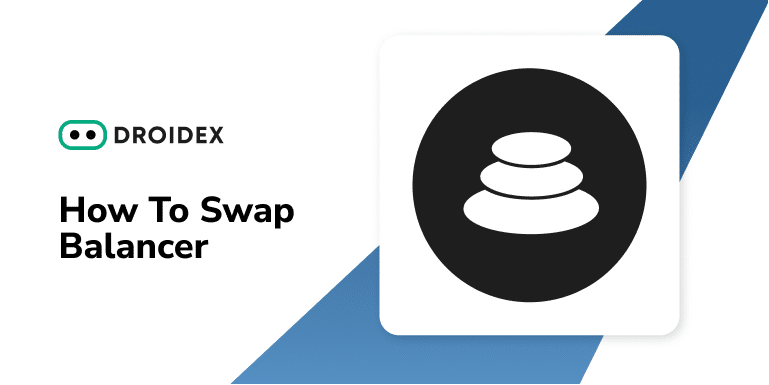You’ve probably heard about the new type of crypto exchange platform, which doesn’t use forgoes accounts and order books at all – they’re actually called automated market makers or AMMs.
The Balancer is one of such platforms, and over the past several months, it has created a real buzz in the digital world. If you’d like to know what the Balancer coin is, how the decentralized exchange works and how it’s possible to exchange its own Balancer token, we’ve got some great news for you – today’s guide will tell you everything you need to know about this platform, as well as provide with detailed step-by-step instructions to help you make a Balance swap without any mistakes. So let’s get started!
What is a Balancer coin?
The Balancer is a well-known decentralized exchange platform, based on Ethereum. It strives to stimulate a distributed computer network to operate an exchange where users can buy and sell any cryptocurrency. Besides, the exchange uses a combination of cryptographic facilities, providing an opportunity to trade without a financial intermediary.
The Balancer can be considered a kind of index fund, where users create funds based on cryptocurrencies in their portfolios. These funds are known as balancing pools – any user who wants to provide liquidity to a pool can easily do this by placing an asset there. Such users earn some trading commission paid by the network for using their funds and collect the reward – the exchange’s own coin, called BAL. These deposits are crucial for the network since they provide users with the liquidity needed to buy and sell cryptocurrencies on the platform. It means that Balancer has to stimulate both sides of its market to work – cryptocurrency users who are willing to make some of their assets available for trading, and traders looking for the best possible price for an asset.
Thus, Balancer works similarly to other decentralized exchanges (DEXs), such as Uniswap (UNI) and Curve (CRV). However, it offers additional features, including the possibility to combine eight tokens into pools.
How Balancer works
Just as an index fund can consist of different stocks, balancing pools include eight various cryptocurrencies. The value of a balancing pool is determined by the percentage of each token there – the weight chosen when the pool was created.
- Self-balancing index fund
Balancer uses custom programs called smart contracts to ensure that each pool maintains the correct proportion of assets, even though the prices of individual coins in the pools may vary.
For example, a balancing pool might start with 25% ETH, 25% DAI, and 50% LEND. If at some point the LEND price doubles, the pool automatically reduces the amount of LEND it holds in order to keep 50% of the pool’s value.
So, where does the LEND go? Balancer’s smart contracts make it available for traders who want to buy credit as prices rise.
It should be noted that liquidity providers still receive a commission while their index funds rebalance, compared to traditional index funds where investors pay a fee for rebalancing services.
- Balancing pools
Balancer offers private and public pools, oriented to users with different risk appetites.
Public pools allow any user to provide liquidity by adding or removing assets. The parameters of public pools are set and cannot be changed before they’re launched. It means they can be useful for users with small assets who want to receive commissions from the most popular and most liquid pools.
A private balancing pool is a pool where only a creator can add or withdraw assets. The user can also customize all other pool settings, such as commissions, weights, and the types of assets it accepts.
Private pools are useful for asset managers with large portfolios looking to earn commissions on their specific assets.
Finally, smart pools are a type of private pool owned by smart contracts. This feature allows pools to be programmed to perform additional functions, such as changing weights or creating an index fund that tracks a real estate portfolio.
How to exchange a Balancer?
Want to make a Balancer swap? If so, we’d like to draw your attention to one of the best decentralized exchanges, which offers its users the most affordable rates across others with top trading efficiency – our Droidex aggregator.
Why choose Droidex? Below you’ll see the exceptional features of the platform you should know about:
- The best rates. The Droidex aggregator connects to many popular DEXs, such as Uniswap, Kyber, Curve, PancakeSwap, and others.
- Gas optimizations. With this platform, you’ll have a chance to find the best rate since it does everything possible for that – Droidex even splits your order across many decentralized exchanges.
- Exchange routing. Droidex is seeking to avoid overengineering the route, so its pathing logic accounts for the gas costs of any suggested step.
Here’s a small step-by-step instruction that will help you avoid all the mistakes and get things right on the first try – just follow each step accurately, and your transaction will be definitely completed successfully.
1. Firstly, visit our official website and click “Start Swap”.
2. Once you’ve done it, choose the Ethereum blockchain, if you’d like to swap the Balancer token.
3. Then, select tokens – for example, BAL and AAVE.
4. Enter the number of tokens – let it be 50. After that, click “Connect Wallet”.
5. Next, choose the wallet – for instance, MetaMask.
6. Press “Swap”.
7. Finally, tap “Confirm Swap”.
8. That’s it! Get your tokens!

In case you want to buy Balancer for fiat, try out Fiatom fiat-to-crypto aggregator that will help you find the best offer on the market completely free of charge.
Conclusion
Now, you know everything you need about the Balancer token. We sincerely hope that our guide helped you to get a full understanding of the way the platform works, as well as how it’s possible to swap BAL. If you’re going to make any operation with the Balancer token, but realize you don’t know enough about it to avoid some difficulties, just remember you can always come back to this article and refresh your memory with all the essential info. Thank you for reading, and exchange wisely!

